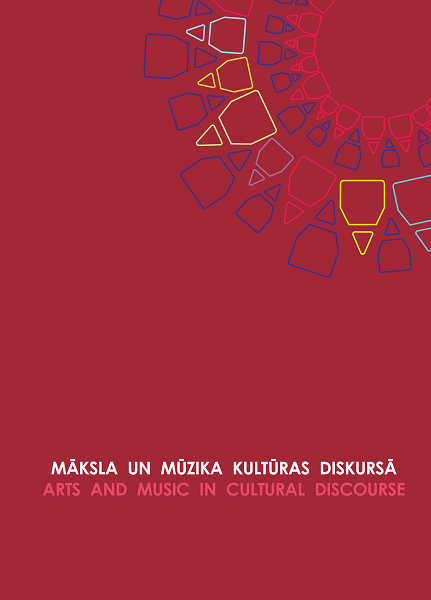GRAPHIC DESIGN OF THE VISUAL COMMUNICATION OF THE EXHIBITION OF THE VILAKAS COUNTY MUSEUM
DOI:
https://doi.org/10.17770/amcd2017.2825Keywords:
visual communication, graphic design, museum, museum design, communicationAbstract
Communication is a conversation, communication, the way information is provided. The museum's exposure language must be aesthetic, informative, cognitive process and memory stimulation.
The designer, who designs and offers museum–oriented and up–to–date design solutions, plays a major role in solving the issues. The designer, in collaboration with the museum's staff, should prepare materials and programs for the society that are in line with the museum's goals and objectives and which society would also consider worthwhile. The authors of the article have learned the wishes of the director of Vilakas County Museum and information about the graphic design requirements of ergonomic visual communication have been gathered, and the school history of the Vilakas County Museum has been developed.
The purpose of the article is to study the materials necessary for the exhibition of the Vilakas Region Museum and testimonies, information on visual communication in museums, analysis of interactions between graphic design and visual communication, as well as to analyze the visual design of the graphic design for the Vilakas Museum exposition on the history of regional schools.
Research methods are the study of literature and internet sources and analyzes the opinion of the director of the museum.
References
Berper, A. A. (1998). Seeing Is Believing: An Introduction to Visual Communication. Skatīts 25.08.2017. https://eric.ed.gov/?id=ED398158
Flemings, D. (2009–2013). Kas veido muzeja būtību – stāsti vai priekšmeti. Muzejs mūsdienu sabiedrībā – 2. Baltijas muzeoloģijas skolas raksti. SIA “Jelgavas tipogrāfija”.
Froilanda, M. (2004–2008). Daudzveidīga pieredze daudzveidīgā vidē – muzejpedagoģijas teorētiskais ietvars. Muzejs mūsdienu sabiedrībā – 2. Baltijas muzeoloģijas skolas raksti. SIA “Jelgavas tipogrāfija”.
Museum Exhibition Design: Communication of Meaning and the Shaping of Knowledge. Skatīts 15.07.2017. http://www.sciencedirect.com/science/article/pii/S1877042814055013.
Ozola, E. (2006). Krāsas uztvere un iedarbība. Rīga: Jumava.
Poulin, R. (2012). Graphic Design and Architecture: A 20th Century History. A Guide to Type, Image, Symbol, and Visual Storytelling [Electronic version]. New York.
Stīvens, E. V. (2004–2008). Ietekme – rezultāta mēraukla. Muzejs mūsdienu sabiedrībā – 2. Baltijas muzeoloģijas skolas raksti. SIA “Jelgavas tipogrāfija”.
Stīvens, E. V. (2004–2008). Veiksmes/neveiksmes shēma muzejos. Muzejs mūsdienu sabiedrībā – 2. Baltijas muzeoloģijas skolas raksti. SIA “Jelgavas tipogrāfija”.
Šusts, V. (1979). Telpas uztvere un kompozīcija. Rīga: Zvaigzne.
Viļakas novada vēsture. (2011–2017). Skatīts 25.08.2017. http://vilaka.lv/index.php?page=muzeji.






